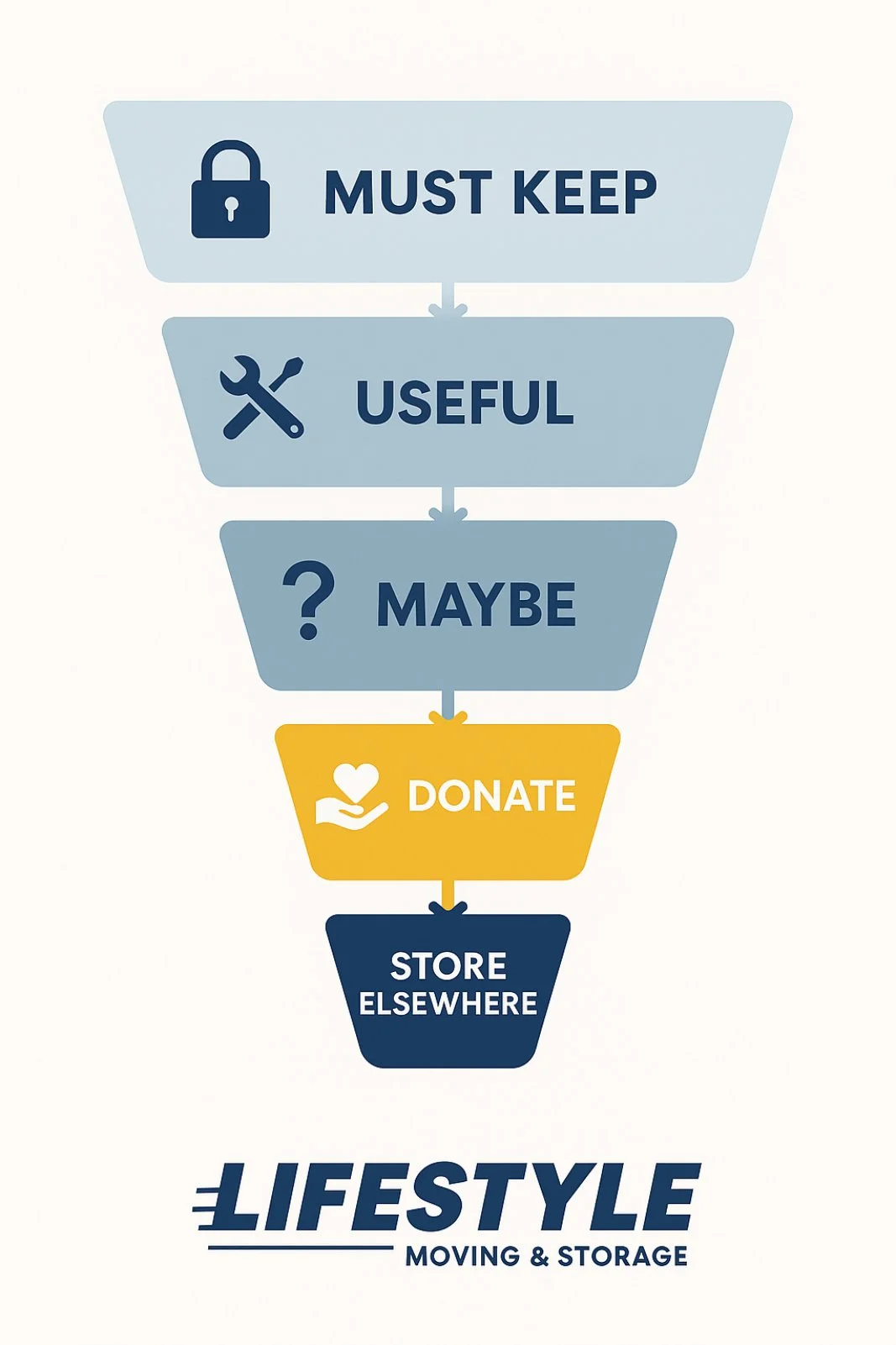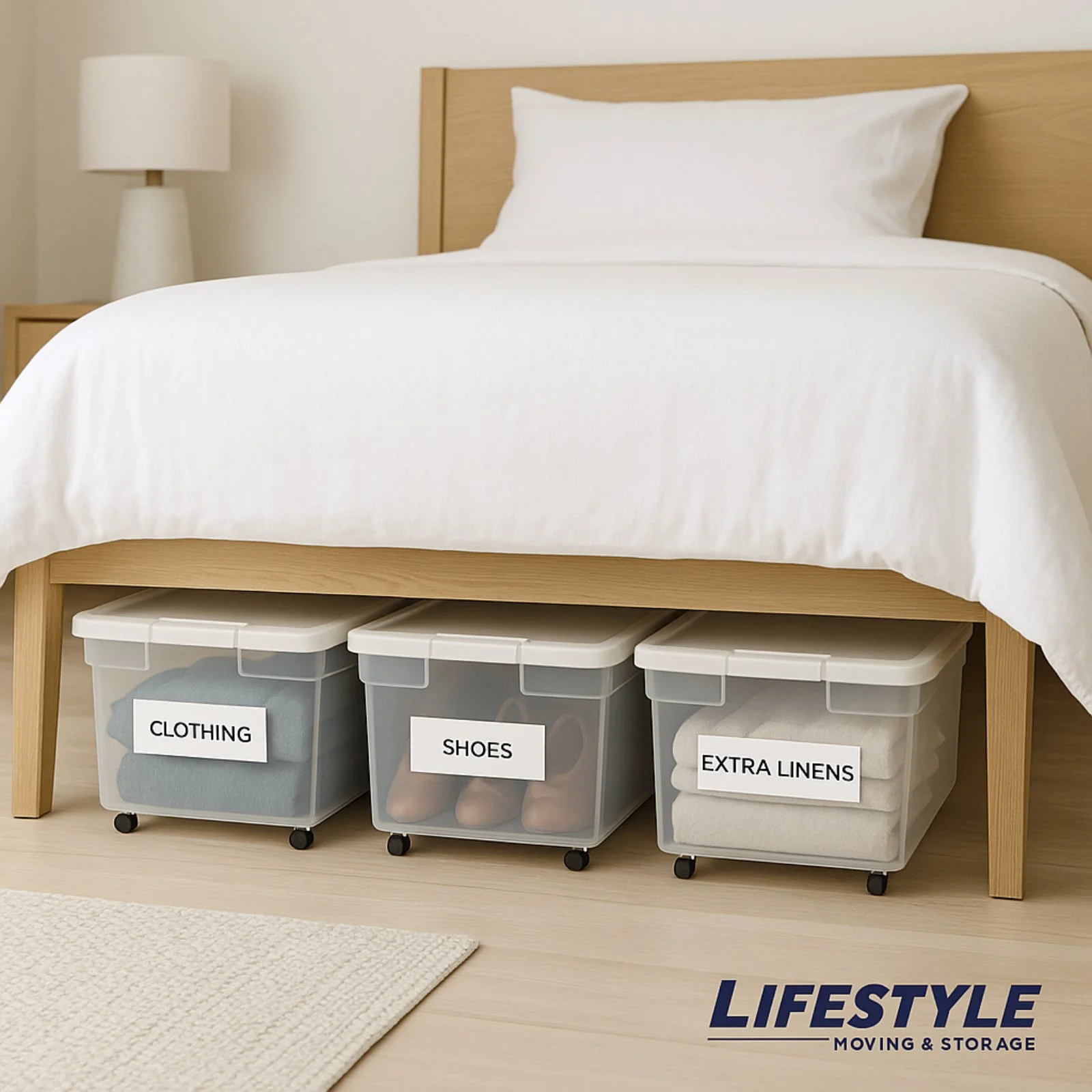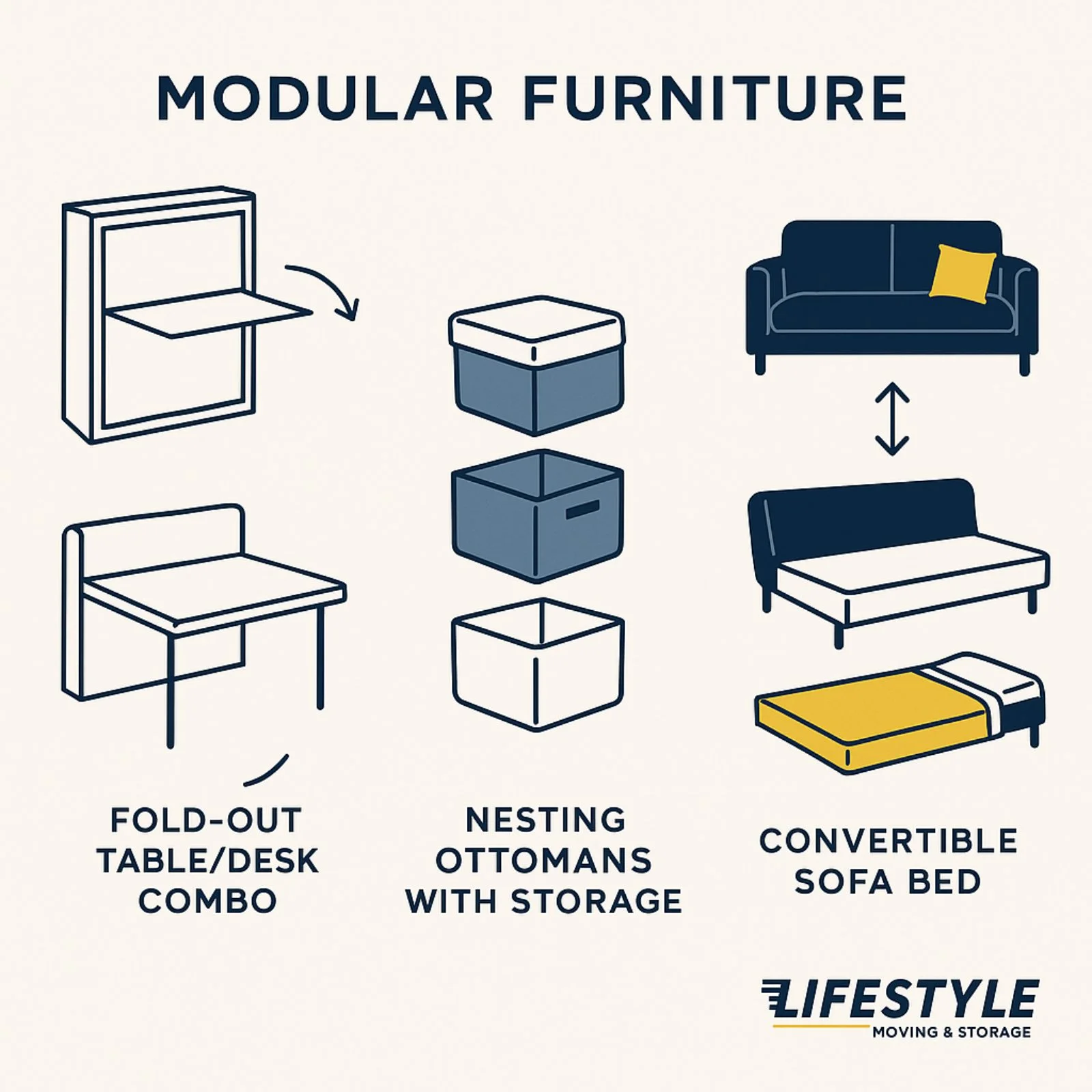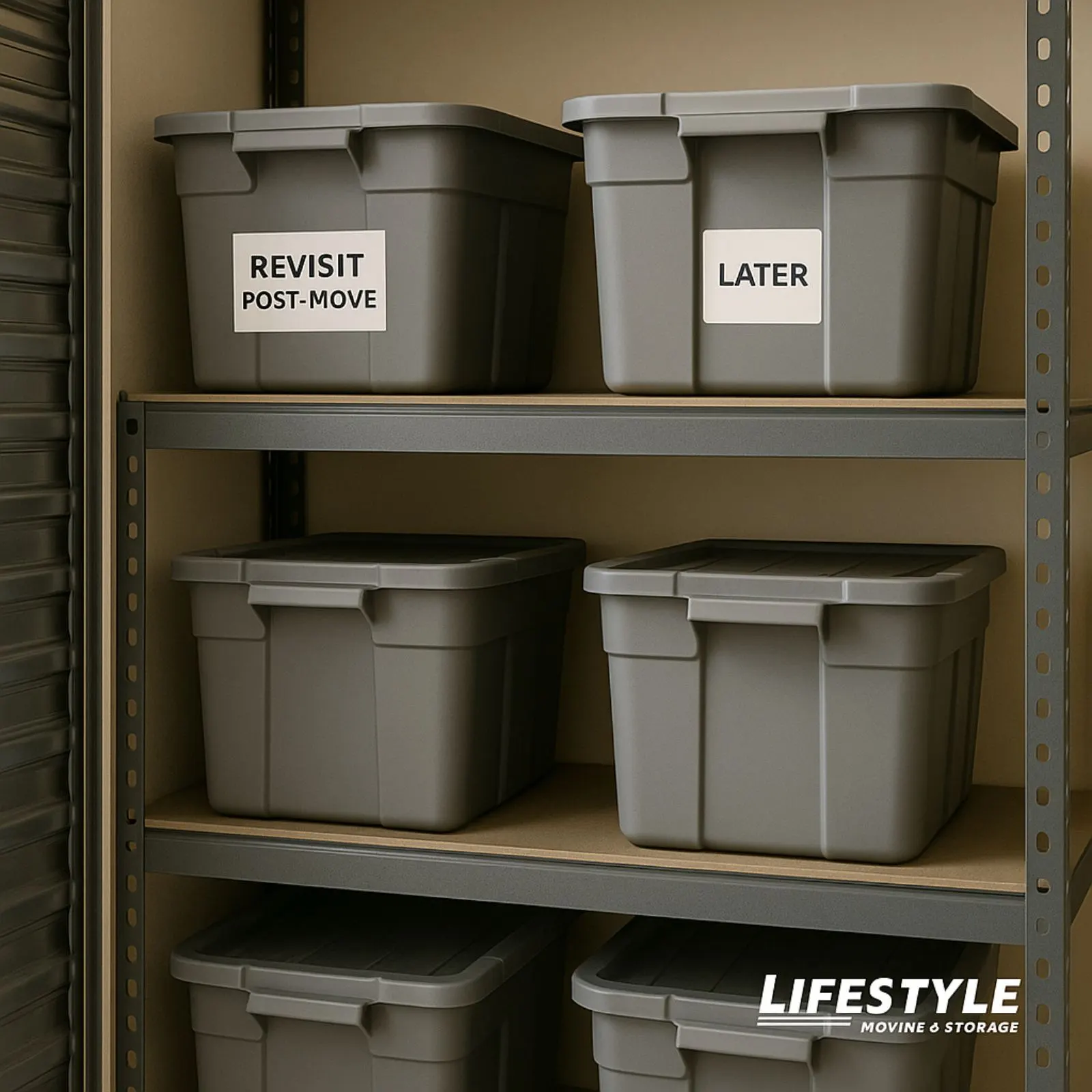Table Of Contents
Ask any New Yorker about their living situation, and you'll hear stories that would make anyone outside the five boroughs question their life choices. We're talking about 400 square feet that somehow needs to function as bedroom, office, kitchen, and social hub all at once. We've moved thousands of clients into apartments where the kitchen, bedroom, and office were all technically the same room, and you know what? They made it work beautifully.
The reality is that millions of people call these compact spaces home, and they're not settling for less. They're getting creative, strategic, and smart about how they live. After years of helping New Yorkers navigate apartment moves into increasingly smaller spaces, we've learned that success isn't about having less, it's about having the right things in the right places. Here's what we've discovered about making small NYC apartments not just livable, but actually enjoyable.
.webp)
What We've Learned from NYC's Smallest Apartments
Moving day in a shoebox apartment is unlike anything else. We've squeezed sectionals through doorways that seemed impossible, carried queen beds up six flights of stairs that barely fit two people side by side, and helped clients realize that their beloved dining table was going to dominate their entire living space. These challenges aren't unique to one building or neighborhood, they're the reality of maximizing NYC apartment space.
The trickiest part isn't always the square footage itself. It's the logistics that come with it. Narrow hallways that force you to angle furniture at impossible degrees. Pre-war buildings with charming character and absolutely no elevator. Doorways that were designed when people were smaller and owned less stuff. We've seen clients fall in love with apartments online, only to discover that their current furniture simply won't make the transition.
But here's what we've also learned: the people who thrive in these spaces aren't necessarily minimalists by choice. They're strategic maximizers who understand that every inch needs to earn its keep. They're not trying to live with less for the sake of some lifestyle philosophy, they're trying to live well within the constraints of NYC real estate.
If you need more tips for how to deal with furniture during your move, these articles are for you → 6 Tips to Relocate With Your Furniture Easily and Safely
Safe Techniques for Couch Transport on Stairs
Smart Packing Starts Before the Move
The most successful small apartment transitions we've witnessed start weeks before moving day. When you're downsizing square footage, you can't afford to figure out what stays and what goes after the boxes are already in your new space. We always recommend what we call an "essentials-first purge", starting with what you absolutely need and building from there, rather than trying to subtract from everything you currently own.

During our pre-move consultations, we help clients think through their new space room by room. That coffee table that perfectly fits your current living room? It might overwhelm a smaller space. The collection of kitchen gadgets that seemed reasonable in a full-sized kitchen? You'll need to choose your favorites. This isn't about judgment, it's about making your new space work for you instead of against you.
Box size becomes crucial when you're moving into a small NYC apartment. We recommend smaller, stackable storage bins over large boxes because they're easier to store in tight closets and can be repurposed for ongoing organization. Plus, they're much more manageable when you're carrying them up those inevitable flights of stairs.
Here's what we typically suggest leaving behind or storing elsewhere:
• Oversized kitchen gadgets that you use once a month (air fryers, we're looking at you)
• Duplicate items like extra sets of dishes or linens
• Seasonal decorations that require significant storage space
• Books that could be digitized or stored in a separate location
• Electronics that overlap in function
• Furniture that serves only one purpose when you need pieces that multitask
Think Vertical and Modular
The clients who make small spaces work brilliantly have mastered the art of vertical living. Floor-to-ceiling shelving isn't just trendy, it's essential when you're working with limited square footage. Wall-mounted storage keeps floor space clear while providing necessary organization. Over-the-door organizers turn every door into a storage opportunity.
Under-bed storage becomes prime real estate in a shoebox apartment. Rolling bins that slide easily in and out make seasonal clothing and extra linens accessible without taking up closet space. Wall hooks and pegboards can transform a narrow hallway or awkward corner into functional storage for everything from coats to kitchen utensils.

We often suggest to clients during consultations that they reconsider large, single-purpose furniture pieces. That massive credenza might look stunning in a showroom, but it'll swallow a Manhattan bedroom whole. Instead, modular pieces that can be reconfigured as needs change provide much more flexibility. Ottoman storage, nesting tables, and furniture that folds or expands give you options as your space requirements shift.

The key is choosing pieces that work harder than they would in a larger space. Your dining table might also be your desk. Your coffee table needs to provide storage. Your bed frame should maximize the space underneath. Every piece needs to justify its footprint by serving multiple functions.
Space-Saving Services That Actually Help
Moving into a small NYC apartment isn't just about getting your belongings from point A to point B, it's about setting up your new space for success. We've learned that certain services make the difference between a chaotic transition and a smooth one.
Furniture disassembly and reassembly becomes essential when you're navigating tight stairwells and narrow doorways. We've taken apart bed frames, dining tables, and shelving units to get them into apartments, then reassembled them in configurations that work better for the new space. Sometimes we'll even suggest reassembling pieces in different rooms than originally planned once we see how everything fits together.

Short-term storage for overflow items gives you breathing room during the transition. Not everything needs to move in on day one. We help clients identify items they'll want eventually but don't need immediately, storing them until the space is organized and they can determine what truly fits their new lifestyle.
Pre-move space planning consultations help avoid the frustration of discovering incompatibilities on moving day. We'll assess your current belongings against your new space's dimensions and layout, helping you make decisions about what to keep, what to modify, and what to leave behind. You shouldn't have to worry whether your sectional will make it through a 28-inch hallway, we'll figure that out before moving day.
The NYC Advantage (Yes, There Is One)
While NYC apartments present unique challenges, they also offer advantages that we've learned to leverage. The city's density means that professional moving services have developed specialized expertise in handling small spaces. We know which buildings have freight elevators, which street permits are required, and how to work within the narrow time windows that many buildings enforce.
We've mastered the logistics of six-floor walkups with no service elevators. We know how to protect narrow hallways and tight corners during furniture transport. We understand the rhythm of NYC building schedules and can coordinate efficiently around other residents and building maintenance.
More importantly, we've learned that NYC small spaces often have character and features that can be maximized with the right approach. High ceilings in older buildings provide vertical storage opportunities. Exposed brick walls eliminate the need for decorative elements. Built-in features like window seats or alcoves can be optimized for storage and function.
The city's robust infrastructure also means that services like furniture rental, storage facilities, and specialized space-planning resources are readily available. You're not trying to make a small space work in isolation, you're part of a city where millions of people have figured out how to live well in compact spaces.

Make the Most of What You Have
Living in a small NYC apartment doesn't mean compromising on comfort or style. It means being intentional about every choice, from the furniture you select to how you organize your belongings. The New Yorkers who love their small spaces aren't those who've learned to live with less, they're those who've learned to live better with exactly what they need.
The most successful small-space dwellers we work with understand that their apartments are base camps, not prisons. They've optimized their spaces for the lives they actually live, not the lives they think they should live. Their homes work hard, just like they do.
Whether you're moving into 400 square feet or just trying to make your current space work harder, we're here to help you make every inch count. Reach out today for a custom move and storage plan built for small-space living.




.webp)